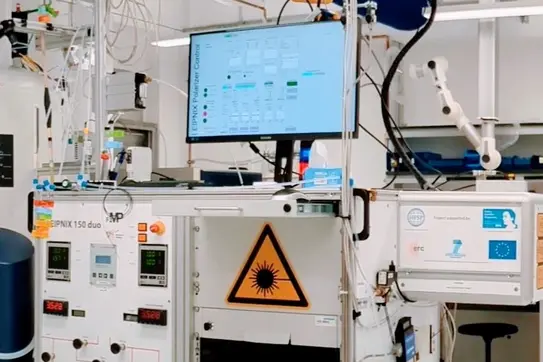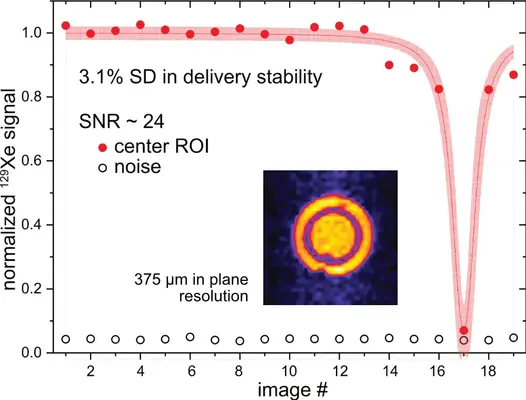Spin hyperpolarization
In close proximity to the NMR magnet, hyperpolarized xenon is produced in a polarizer optimized for hyper-CEST measurements using spin exchange optical pumping (SEOP). A narrow-band IR laser with 180 W cw power is used for this purpose.


The D1 transition of rubidium vapor in a glass cell is pumped with a diode laser emitting at 795 nm. Together with a static magnetic field of approx. 20 G, this enables a high electron spin polarization to be achieved in accordance with the selection rules. Xenon gas flowing through the pump cell picks up this polarization through the Fermi contact interaction effect between the Rb electron and the Xe nucleus.

LEIPNIX can deliver hyperpolarized Xe with high stability continuously over several hours, enabling the acquisition of Xe MRI data that can detect even the smallest amounts of biosensors.